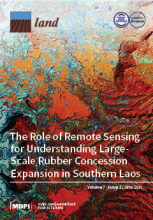/ library resources
Showing items 37 through 45 of 86.Diversified livelihoods combining farming, livestock keeping and non-farm income are characteristic of many rural households worldwide. For the Central Asian and Caucasian region, livestock keeping is especially important in terms of land use and socio-cultural heritage.
The process of population concentration in cities is a worldwide phenomenon—not yet finished—which has led to a widespread rural exodus and abandonment of rural areas. In Spain it occurred very abruptly from 1960, leaving numerous population centers abandoned in the northern half of the country.
An increasing number of African States are recognizing customary land tenure. Yet, there is a lack of research on how community rights are recognized in legal and policy frameworks, how they are implemented in practice, and how to include marginalized groups.
Combining socio-cultural valuations of ecosystem services with ecological and monetary assessments is critical to informing decision making with an integrative and multi-pronged approach.
A worldwide introduction of renewable energy has been required to reduce greenhouse gas emissions. Concomitantly, this has caused conflict between renewable energy development and local communities over landscape changes.
The paper investigates whether farm dwellers in the KwaZulu-Natal (KZN) province of South Africa are subject to a “double exposure”: vulnerable both to the impacts of post-apartheid agrarian dynamics and to the risks of climate change.
We studied livelihood changes and poverty dynamics over a 25-year period in two villages in central Tanzania. The villages were, from the early 1990s and 2000s, strikingly poor with between 50% and 55% of families in the poorest wealth groups.
Rangelands throughout sub-Saharan Africa are currently undergoing two major pressures: climate change (through altered rainfall and seasonality patterns) and habitat fragmentation (brought by land use change driven by land demand for agriculture and conservation).
This paper investigates the drivers and dynamics of livelihood and landscape change over a 30-year period in two sites in the communal drylands of Zimbabwe (Marwendo) and South Africa (Tshivuhulani).
Paginação
Land Library Search
Through our robust search engine, you can search for any item of the over 73,000 highly curated resources in the Land Library.
If you would like to find an overview of what is possible, feel free to peruse the Search Guide.



